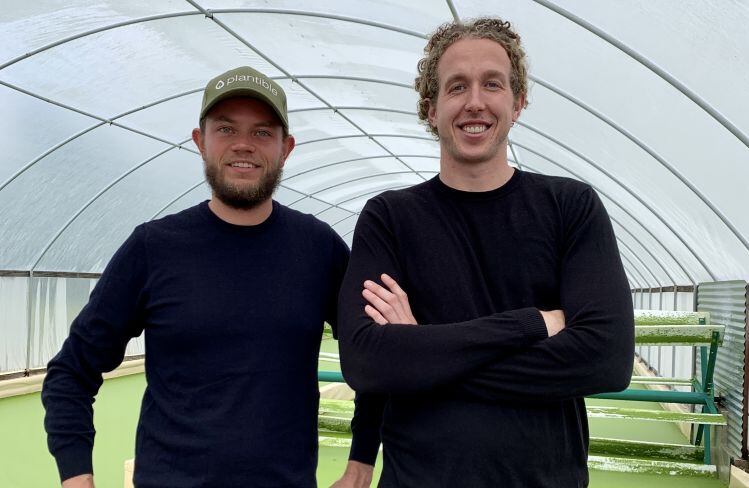Founded by Beth Zotter (who had previously researched seaweed’s potential as a biofuel) and Dr. Amanda Stiles (who previously headed up research at plant-protein specialist Ripple Foods) in 2019, Trophic is looking to commercialize a 65% protein concentrate from higher-protein varieties of red seaweed that could work in a variety of applications from meat and seafood alternatives to salty snacks and protein bars.
The protein concentrate (as opposed to an isolate) still contains some valuable parts of the seaweed that have water- and oil-binding properties, making it potentially attractive as an ingredient in plant-based burgers and other products where companies are trying to remove methylcellulose, which has great functionality, but is pricey, and not very label-friendly, said Zotter.
“For something like a plant-based meat application, we want to keep some of those carbohydrates and the color and flavor, so we can deliver protein, but also binding properties, vitamin B12, an umami flavor, and a red/brown color.
“Many of the products on the market are currently colored with beet juice, and they don’t really turn brown, which means I’m always overcooking my Beyond Burgers because I really want my meat to turn brown,” added Zotter, who said Trophic is “actively fundraising right now” for a $2.6m seed round.
A shorter, cleaner label for some plant-based meats?
There are certain applications such as plant-based bacon products where firms are currently binding soy- or pea-based products together with carbohydrates and starch, where a seaweed protein concentrate might enable firms to ditch these ingredients, she said. “You could get a shorter, cleaner label.”
She added: “Our expectation is that in the beginning at least, this will be an additive ingredient [as opposed to the primary protein source in a plant-based burger for example] in addition to soy or pea, but longer term we’d love to make center of the plate products.”
Compelling economics
From a purely economic standpoint, seaweed has obvious appeal as a protein source in that it grows very rapidly, the fertilizer is free (nitrogen from seawater) the yields are very high, and other parts of the plant can also be commercialized, added Zotter, who was speaking to FoodNavigator-USA after the company secured its second research grant from the Good Food Institute.
“There is immense potential to use seaweed as a sustainable, high-quality source of protein. Seaweed has the potential to outcompete soy on cost and scale. If you look at the commodity prices for seaweed right now, per kilo, they’re cheaper than peas, and seaweed has the potential to produce 10x the protein per acre than soybeans.
“Algae [seaweed is a type of algae] is the most productive photosynthetic organism on the planet. But what’s great about growing seaweed versus microalgae or duckweed is that we don’t need tanks."
'Seaweed has the potential to outcompete soy on cost and scale'
She added: “A lot of people don’t appreciate that the capital cost of building bioreactors or even open ponds… it’s expensive, whereas the ocean provides all those resources for free, plus there are already 30m tons of seaweed produced per year.”
Asked about intellectual property, she said: "Our core IP is in food product and process technology, and our business model uses the existing low-cost supply of seaweeds farmed globally; farming is not part of our business model. However, we are engaged in farming research because it is key to unlocking the future potential of seaweed to supply the world's protein needs and the scale and cost that requires. Seaweed has the potential to outcompete soy on cost and scale.
"If we can accelerate the transfer of those technologies to our supply chain, it will benefit our product and our bottom line."
The business model
Trophic's plan is to be a b2b ingredient supplier, explained Stiles: "Ideally we would like to create a branded ingredient. It is not currently in our business model to develop our own CPG products. However, we have not ruled out following the playbook of other ingredient companies that have developed CPG products primarily to showcase a new ingredient and increase customer demand."
Currently, Stiles and Zotter are producing concentrates at lab bench scale, which does not produce enough material to supply samples to food companies, so the next step is to move to pilot-scale, aiming initially for 1kg per batch to 10kg per batch as they optimize the process, she said.
"The seed money would get us to our own pilot product facility and supplying initial customers."
Seaweed varieties
Trophic is exploring multiple varieties of seaweed, from those already produced at scale such as nori and ogo (used in poke bowls) to seaweeds used to grow carrageenan (which are lower in protein), but is most interested in dulse, which “tastes like bacon,” and is currently harvested by hand at a small scale, making it “super expensive… but it doesn’t have to be,” said Zotter.
“There’s no reason why it can’t be farmed at very large scale if there’s a [new] market for it, so that’s one of the species we’re really excited about it. We are also looking at a rare species of nori that can be grown on ropes.”
As for protein quality, said Stiles, "It varies a bit species to species, but seaweed proteins contain all the essential amino acids."
Labeling and regulatory issues
From a regulatory perspective, said Stiles, who is on a mission to “get people to get more of their proteins from plants rather than factory farmed animals,” the company would likely have to put together a GRAS determination for its protein concentrates and is talking to several companies to understand what this will involve.
“Our expectation is that it would take between six months to a year,” added Zotter, who said the protein can be extracted from dried seaweed or wet product. “Dried is easiest to work with but there are some processes where you use fresh seaweed, so it might make sense for us to locate close to the supply so we can do some fresh processing.”
From a labeling perspective, she said, “We hope to be able to say, ‘seaweed protein concentrate’ on the label and ideally we’d like to have a branded ingredient. As far as we know, we’re the only ones working on this and we’re trying to establish some intellectual property in this area.”
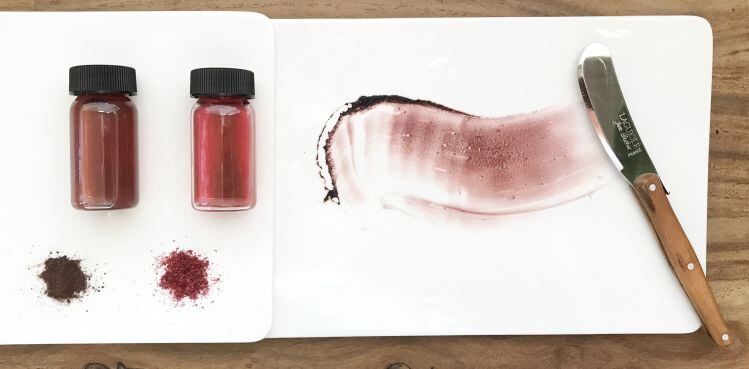
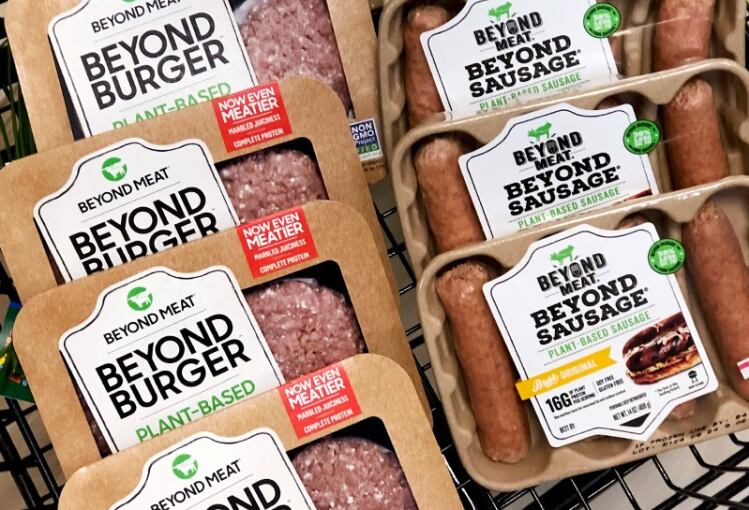
According to Nielsen data, US retail sales of fresh meat alternatives rose 258.8% year-on-year in the 10 weeks to May 9, while fully cooked plant-based meat alternatives were up 56%.
SPINS data, meanwhile, shows that US retail sales of plant-based meat rose 18.4% in 2019 to $939.5m, representing 1% of the meat category (whereas plant-based milk accounted for 14% of fluid milk sales in 2019).
"Conventional meat companies have reconstituted as protein companies, and nine of the 10 biggest have either launched or invested in plant-based meat, cultivated meat, or both. With historic pressures on conventional meat production, we expect to see the large meat conglomerates double down on their alternative protein investments.”
Bruce Friedrich, executive director, The Good Food Institute
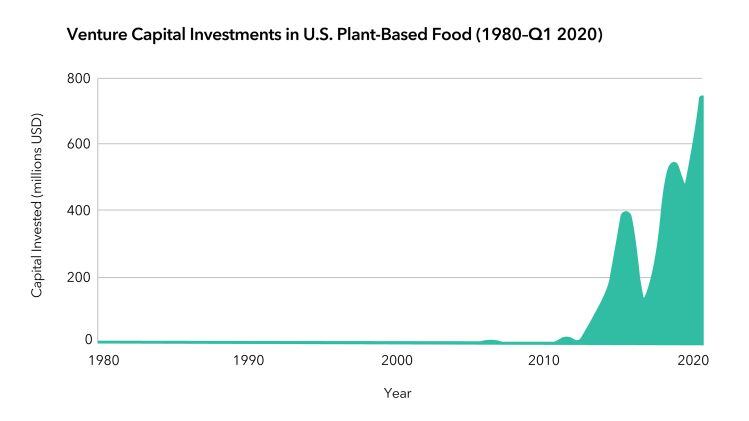

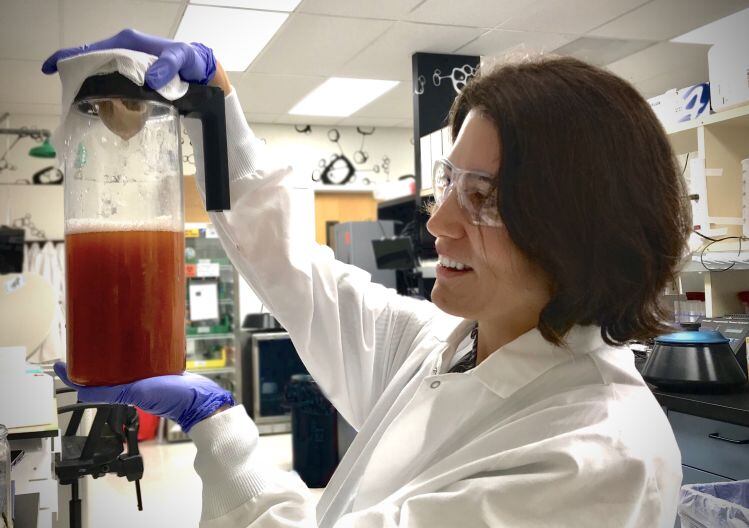
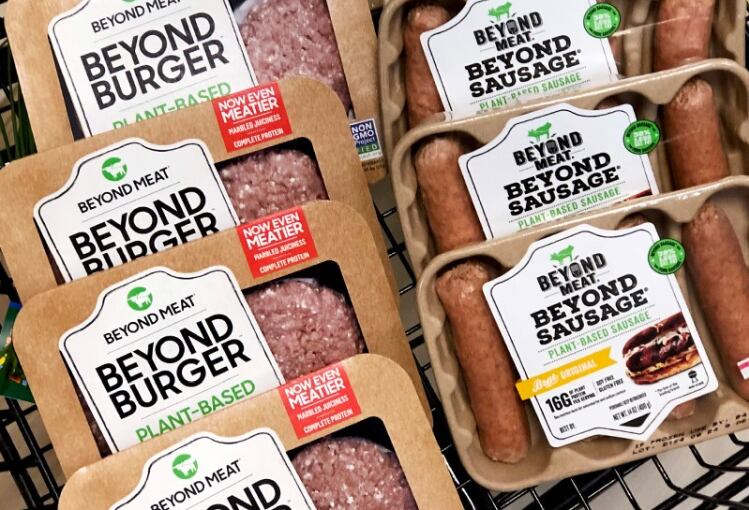
![Plant-based meat brands seize initiative as [animal] meat processors struggle, but no room for complacency, say Impossible Foods, Atlantic Natural Foods](https://www.foodnavigator-usa.com/resizer/v2/EKUDSA3WGJNTHP4JXI5NPXNF5M.jpg?auth=0f0f9e347e483cbe07cc169dbe4c581028d509890f9ccb6842b3346d8aacf812&smart=true)
